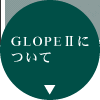予定表 -詳細情報-
| 件名 | WS 栗崎周平氏 |
| 開始日時 | 2011年 11月 14日 (月曜日) 10時40分 (GMT+09:00) |
| 終了日時 | 2011年 11月 14日 (月曜日) 12時10分 (GMT+09:00) |
| 場所 | 4号館301教室 |
| 詳細 | 【報告者】栗崎周平氏(テキサスA&M大学 准教授) 【タイトル】Detecting Audience Costs in International Disputes 【場所】4号館301教室 【概要】 Determining the existence and size of audience costs is critical for understand- ing their causal effects and behavioral implications, but also challenging because strategic selection bias can truncate their observable distribution. We use strategic structural estimation to obtain direct evidence of audience costs with observational data on international crises. In our estimation, when a state makes a threat and then backs down, the state incurs a negative payoff, strictly less than the payoff it would have obtained had it not threatened. This payoff difference, which defines audience costs, is shown to exist for any regime type. We also show that democratic leaders incur greater audience costs than do autocrats. Further, by estimating the amount of belief updating that occurs, we present the first evidence that audience costs improve the ability of countries to signal their intentions and hence facilitate communication through threats. These results establish an empirical foundation for the audience costs proposition. ※ 1 ワークショップ参加希望者は、事前に河野先生にご連絡ください。 ※ 2 3限は栗崎氏によりテキサス A&M大学の紹介をしていただきます。 |
| カテゴリー | ワークショップ・セミナー |








